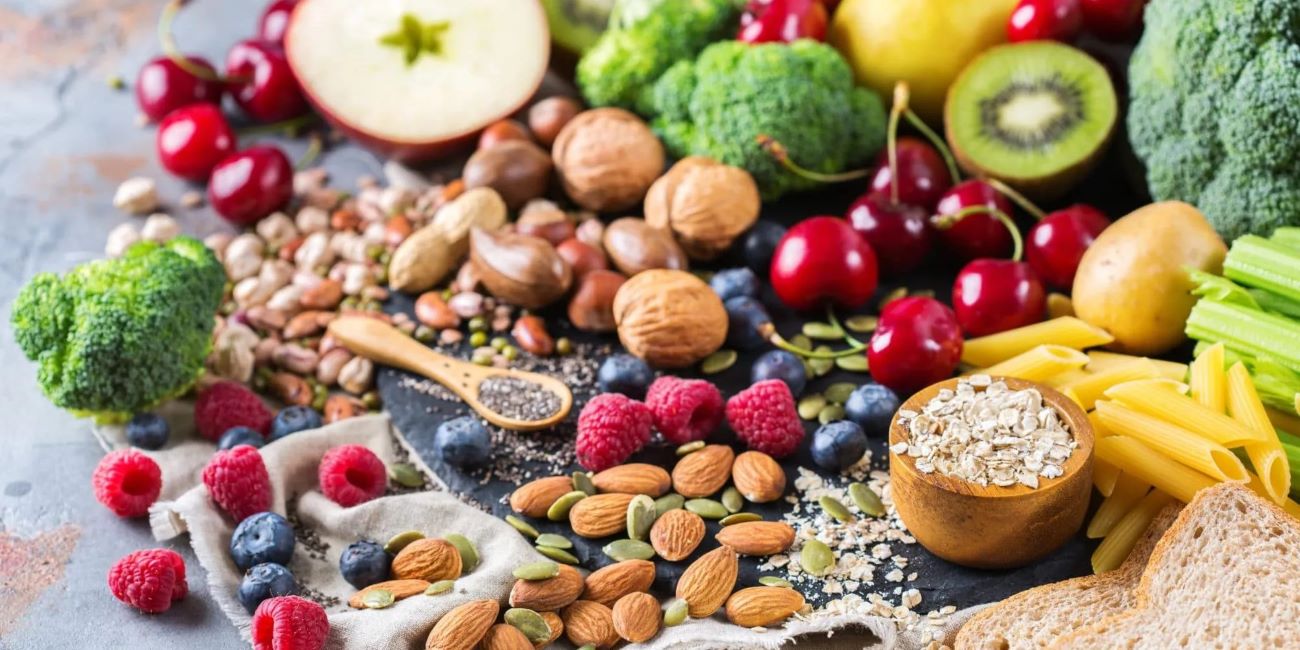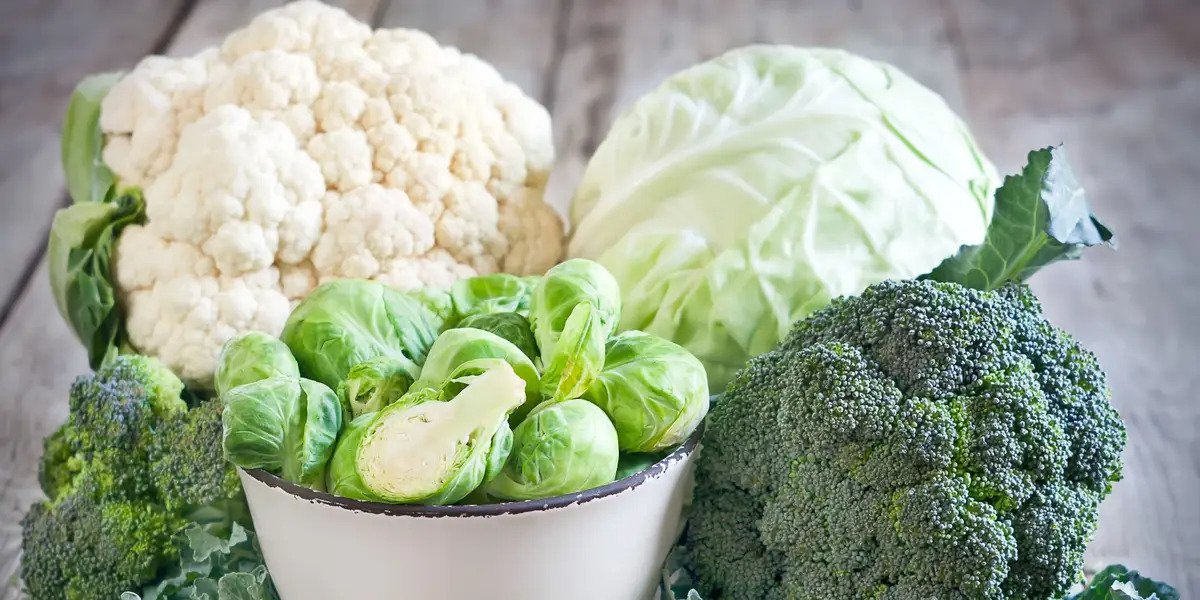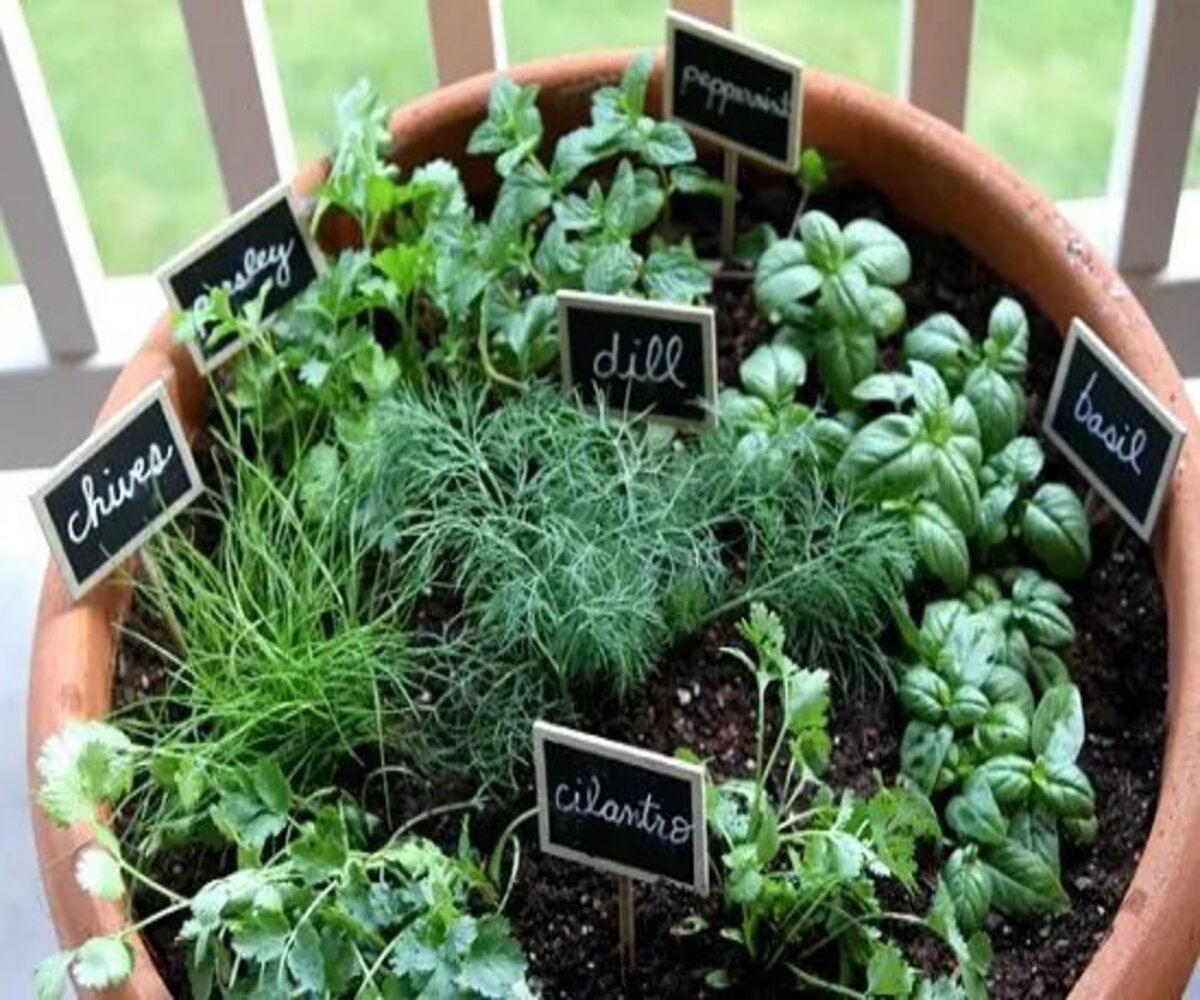Home>Gardening News and Trends>Latest News>What Vegetables Can You Grill


Latest News
What Vegetables Can You Grill
Modified: January 22, 2024
Discover the latest news on what vegetables you can grill. Find out the best grilling techniques and delicious recipes for your next outdoor cooking adventure.
(Many of the links in this article redirect to a specific reviewed product. Your purchase of these products through affiliate links helps to generate commission for Chicagolandgardening.com, at no extra cost. Learn more)
Table of Contents
Introduction
Grilling is a popular cooking method that adds a unique and delicious flavor to various types of food. While grilling is often associated with meat and seafood, it’s essential not to overlook the incredible potential of grilling vegetables. Not only does grilling vegetables offer an array of flavors and textures, but it also retains their nutritional value.
Grilling vegetables creates a wonderful smoky flavor that elevates their natural taste. The high heat from the grill caramelizes the sugars in the vegetables, resulting in a sweet and slightly charred exterior. This cooking method also helps to preserve the veggies’ vibrant colors and crisp textures, making them visually appealing and enjoyable to eat.
What sets grilling vegetables apart is the versatility it offers. You can grill a wide range of vegetables, from the classic choices like peppers and zucchini to more unique options like asparagus and Brussels sprouts. The grill allows you to experiment with different flavors and combinations, adding depth and complexity to your dishes.
Incorporating grilled vegetables into your meals not only enhances the taste but also provides numerous health benefits. Vegetables are packed with essential vitamins, minerals, and dietary fiber that support a healthy lifestyle. Grilling vegetables helps to retain these nutrients while offering a delicious alternative to traditional cooking methods.
Whether you’re a dedicated vegetarian, looking for a healthier side dish, or simply wanting to add some variety to your grilling repertoire, grilling vegetables is a fantastic option. In the following sections, we will explore the benefits of grilling vegetables, the best vegetables for grilling, tips for preparation, grilling techniques for different vegetables, and even share some mouthwatering grilled vegetable recipes to inspire your culinary adventures.
Benefits of Grilling Vegetables
Grilling vegetables offers numerous benefits, both in terms of flavor and nutrition. Let’s delve into some of the key advantages of incorporating grilled vegetables into your meals:
1. Enhanced Flavor: Grilling vegetables adds a unique smoky flavor that can’t be achieved with other cooking methods. The high heat caramelizes the natural sugars in the vegetables, intensifying their taste and creating a delightful charred exterior.
2. Vibrant Colors and Textures: Grilling retains the vibrant colors and crisp textures of vegetables, making them visually appealing and enjoyable to eat. The contrast between the slightly charred exterior and the tender interior adds depth and complexity to each bite.
3. Nutritional Value: Grilling vegetables helps to preserve their nutritional content. Vegetables are rich in vitamins, minerals, and dietary fiber, which are essential for a well-balanced diet. By grilling vegetables, you retain the nutrients while adding a delicious twist to your meals.
4. Healthy Alternative: Grilling vegetables offers a healthier alternative to consuming processed or high-fat foods. It’s a great way to reduce calorie intake while still enjoying flavorful and satisfying dishes. Plus, grilled vegetables are low in fat and cholesterol, making them a heart-healthy choice.
5. Versatility: The beauty of grilling vegetables lies in its versatility. You can grill a wide range of vegetables, from sturdy options like bell peppers and eggplant to delicate choices like asparagus and mushrooms. This allows for endless creativity in your grilling recipes.
6. Easy and Quick: Grilling vegetables is a straightforward and time-efficient cooking method. With minimal prep and cooking time, you can have a delicious and nutritious side dish ready in no time. It’s perfect for busy weeknights or when you want to spend less time in the kitchen.
7. Dietary Preferences and Restrictions: Grilling vegetables is an excellent option for those with dietary restrictions or specific eating preferences. Whether you’re a vegetarian, vegan, or looking to incorporate more plant-based meals into your diet, grilled vegetables provide a satisfying and flavorful alternative.
Incorporating grilled vegetables into your meals not only adds excitement and variety but also promotes a healthier lifestyle. So, fire up the grill and explore the endless possibilities of grilling vegetables to enhance your culinary experiences.
Finding the Right Vegetables for Grilling
When it comes to grilling vegetables, choosing the right ones can make a significant difference in the flavor and overall success of your grilled dishes. Here are some tips for finding the perfect vegetables to grill:
1. Durable Vegetables: Opt for vegetables that can withstand the heat and direct flame of the grill without falling apart. Sturdy vegetables like bell peppers, zucchini, eggplant, and onions are excellent choices as they hold up well on the grill.
2. Seasonal Produce: Consider using seasonal vegetables for grilling. Not only will they be at their peak flavor, but they are also likely to be more affordable and readily available. Seasonal choices may include corn on the cob, tomatoes, asparagus, and summer squash.
3. Size Matters: Select vegetables that are more uniform in size for even cooking. This ensures that all pieces cook at the same rate and prevents smaller pieces from burning while waiting for larger ones to cook through. Aim for vegetables that are about 1-2 inches in thickness.
4. Colorful Variety: Experiment with a variety of colors to make your grilled vegetable dishes visually appealing. Choose a mix of green, red, yellow, and orange vegetables like bell peppers, cherry tomatoes, and yellow squash to create a vibrant and enticing plate.
5. Texture Contrast: Include vegetables with different textures to add depth to your grilled dishes. Combine soft and tender vegetables like zucchini and mushrooms with crispier options like onions and bell peppers for a delightful textural contrast.
6. Grilling-Friendly Vegetables: Some vegetables naturally lend themselves well to grilling due to their unique characteristics. Asparagus, artichokes, Brussels sprouts, and mushrooms are prime examples of vegetables that take on exceptional flavors when grilled.
7. Experiment and Get Creative: Don’t be afraid to step out of your comfort zone and try grilling vegetables that you may not typically associate with grilling. From avocado and cabbage to watermelon and pineapple, there are plenty of surprising and delicious options to explore.
Remember to wash and prepare the vegetables properly before grilling. Peel, slice, or dice them as needed and toss with a little oil and seasoning to enhance the flavors. Whether you stick to the classic choices or venture into new territory, finding the right vegetables for grilling will ensure a fantastic and flavorful grilling experience.
Preparation Tips for Grilling Vegetables
Proper preparation is key to achieving perfectly grilled vegetables that are cooked to perfection and bursting with flavor. Consider these helpful tips to ensure your grilled vegetable dishes are a hit:
1. Preheat the Grill: Preheat your grill to medium-high heat before adding the vegetables. This allows for even cooking and helps to prevent sticking.
2. Cut Vegetables Evenly: Cut vegetables into consistent and uniform sizes to ensure they cook evenly. This will prevent some pieces from being undercooked while others become overcooked. Aim for similar thickness and shape when slicing or dicing.
3. Oil and Seasoning: Lightly coat the vegetables with oil to prevent sticking and add flavor. Use a neutral oil like canola or vegetable oil, or for added flavor, try brushing them with olive oil. Season the vegetables with salt, pepper, and any other herbs or spices according to your preference.
4. Marinate for Flavor: Consider marinating the vegetables before grilling to infuse them with additional flavor. A simple marinade of olive oil, vinegar, garlic, and herbs can work wonders. Let the vegetables marinate for at least 30 minutes or even overnight for more intense flavor.
5. Use Skewers or Grill Baskets: To prevent smaller vegetables from falling through the grill grates, use skewers or grill baskets. Skewer vegetables like cherry tomatoes, mushrooms, or chunks of bell peppers to keep them secure. Grill baskets are ideal for smaller and delicate vegetables like asparagus or sliced zucchini.
6. Precook Some Vegetables: For vegetables that take longer to cook, such as potatoes or carrots, consider partially boiling or steaming them before grilling. This will ensure they are cooked through without becoming burnt on the outside.
7. Grilling Foil or Parchment Paper: If you’re grilling smaller or more delicate vegetables like green beans or sliced onions, layer them on a piece of foil or parchment paper. This prevents them from falling through the grill grates while getting the smoky flavor from the grill.
8. Keep an Eye on Cooking Times: Different vegetables require varying cooking times on the grill. Keep a close eye on them to prevent them from burning or becoming too soft. Grill firmer vegetables like peppers and onions for 4-6 minutes per side, while delicate vegetables like asparagus or mushrooms may only need 2-4 minutes per side.
9. Rest Before Serving: Once the vegetables are cooked to your desired tenderness, remove them from the grill and let them rest for a few minutes before serving. This allows the flavors to settle and ensures they are at the perfect temperature for serving.
By following these preparation tips, you’ll be well on your way to creating delicious and flavorful grilled vegetable dishes that will impress your family and friends. Grilled vegetables are a versatile and delightful addition to any meal, and these tips will help you make the most of your grilling experience.
Grilling Techniques for Different Vegetables
While grilling vegetables shares some common principles, different vegetables require specific techniques to achieve the best results. Understanding the grilling techniques for various vegetables will help you bring out their unique flavors and textures. Here are some grilling techniques for different vegetables:
1. Bell Peppers: Preheat the grill to medium-high heat. Cut the bell peppers in half and remove the seeds. Brush with oil and place them on the grill, skin side down. Grill for 4-6 minutes per side until the skin is charred and the flesh is soft and slightly blistered.
2. Zucchini and Summer Squash: Preheat the grill to medium-high heat. Slice the zucchini or summer squash into thick rounds, then brush with oil and season with salt and pepper. Grill for 2-3 minutes per side until grill marks appear and the vegetables are tender.
3. Eggplant: Preheat the grill to medium-high heat. Slice the eggplant into rounds or lengthwise strips. Brush with oil and sprinkle with salt and pepper. Grill for 3-4 minutes per side until the eggplant is tender and lightly charred.
4. Asparagus: Preheat the grill to medium-high heat. Trim the tough ends of the asparagus spears. Toss with oil, salt, and pepper. Place on the grill and cook for 2-3 minutes per side until the spears are tender and charred.
5. Mushrooms: Preheat the grill to medium heat. Clean and trim the mushrooms, removing any tough stems. Brush with oil and season with salt and pepper. Grill the mushrooms for 3-4 minutes per side until they are tender and slightly golden.
6. Corn on the Cob: Preheat the grill to medium heat. Peel back the husks of the corn, removing the silk but leaving the husks attached. Brush the corn with butter and season with salt and pepper. Place on the grill and cook for 10-12 minutes, turning occasionally, until the corn is charred and cooked through.
7. Tomatoes: Preheat the grill to medium-low heat. Slice the tomatoes in half or keep them whole if they are small. Rub with oil and season with salt and pepper. Grill for 2-3 minutes per side until they are slightly softened and grill marks appear.
8. Onions: Preheat the grill to medium heat. Slice the onions into thick rounds or keep them whole if they are small. Brush with oil and season with salt and pepper. Grill for 4-5 minutes per side until the onions are tender and caramelized.
9. Brussels Sprouts: Preheat the grill to medium heat. Trim the tough ends of the Brussels sprouts and cut them in half. Toss with oil, salt, and pepper. Grill for 4-5 minutes per side until the sprouts are tender and lightly charred.
Remember to adjust the cooking times based on the size and thickness of the vegetables. Always keep a close eye on the vegetables as they grill to prevent them from burning. With these grilling techniques, you’ll be able to bring out the best flavors and textures in a variety of vegetables, creating a delicious and satisfying grilled veggie feast.
Delicious Grilled Vegetable Recipes
Grilling vegetables opens up a world of culinary possibilities, allowing you to create delicious and nutritious dishes that can stand on their own or serve as a flavorful accompaniment to meats and other grilled items. Here are a few mouthwatering grilled vegetable recipes to inspire your next grilling adventure:
1. Grilled Vegetable Skewers: Thread cherry tomatoes, bell peppers, zucchini, mushrooms, and red onions onto skewers. Brush with a mixture of olive oil, garlic, and fresh herbs. Grill the skewers for 8-10 minutes, turning occasionally, until the vegetables are tender and slightly charred.
2. Grilled Corn Salad: Grill whole ears of corn on medium heat until charred. Once cooled, slice off the kernels and combine with diced tomatoes, red onion, chopped cilantro, lime juice, olive oil, and salt. Toss well and serve as a refreshing and flavorful salad.
3. Grilled Portobello Mushroom Burger: Brush portobello mushroom caps with balsamic vinegar, olive oil, minced garlic, and a sprinkle of salt and pepper. Grill for 5-7 minutes per side. Serve on a bun with lettuce, tomato, grilled onions, and your favorite toppings for a tasty vegetarian burger option.
4. Grilled Asparagus with Lemon Parmesan: Toss asparagus spears with olive oil, lemon zest, garlic, salt, and pepper. Grill for 2-3 minutes per side until crisp-tender. Sprinkle with freshly grated Parmesan cheese and a squeeze of lemon juice before serving.
5. Grilled Miso-Glazed Eggplant: Slice eggplant into thick rounds and brush with a mixture of miso paste, soy sauce, honey, garlic, and sesame oil. Grill for 4-5 minutes per side until the glaze caramelizes and the eggplant becomes tender and flavorful.
6. Grilled Stuffed Bell Peppers: Cut bell peppers in half and remove the seeds. Fill each half with a mixture of cooked quinoa, black beans, corn, diced tomatoes, and shredded cheese. Place on the grill and cook for 15-20 minutes until the peppers are tender and the filling is heated through.
7. Grilled Caesar Salad: Cut romaine lettuce hearts in half lengthwise, leaving the core intact. Brush with olive oil and grill for 1-2 minutes per side until lightly charred. Serve topped with homemade Caesar dressing, grated Parmesan cheese, and croutons for a unique twist on a classic salad.
8. Grilled Balsamic Vegetables: Toss a medley of bell peppers, zucchini, red onions, and cherry tomatoes with balsamic vinegar, olive oil, minced garlic, and dried Italian herbs. Grill in a grill basket or skewers until the vegetables are tender and caramelized, about 10-12 minutes.
These recipes are just a starting point to get your creativity flowing. Feel free to customize them by adding your favorite herbs, spices, or sauces. Get adventurous with different vegetable combinations and experiment with different marinades and seasonings to create your own unique grilled vegetable masterpieces. Enjoy the smoky and delicious flavors that grilling brings out in vegetables!
Conclusion
Grilling vegetables is a fantastic way to elevate your culinary skills and create delicious and nutritious dishes. The unique smoky flavor and caramelized texture that grilling imparts on vegetables can turn even the simplest ingredients into mouthwatering creations. Additionally, grilling vegetables allows you to maximize the nutritional value of these plant-based foods while providing a healthy and flavorful alternative to traditional cooking methods.
By choosing the right vegetables for grilling, preparing them properly, and utilizing the appropriate grilling techniques, you can unlock a world of flavors and textures that will tantalize your taste buds. From the sturdy bell peppers and zucchini to delicate asparagus and mushrooms, the options are endless. Seasonal produce, creative marinades, and thoughtful combinations contribute to the success of your grilled vegetable dishes.
The benefits of grilling vegetables go beyond just taste and aesthetics. Grilled vegetables offer a wealth of nutrients, vitamins, and minerals essential for a well-rounded diet. They are a healthy alternative to processed or high-fat foods, making them an excellent choice for anyone looking to make nutritious choices while enjoying a satisfying meal.
With a little effort and creativity, your grilled vegetable recipes can become the star of the show. Whether you’re grilling them as side dishes, incorporating them into salads, or using them to create plant-based main courses, the versatility of grilled vegetables knows no bounds. From colorful skewers and hearty burgers to refreshing salads and savory sides, there is something for everyone to enjoy.
Embrace the art of grilling vegetables and allow your culinary skills to flourish. Experiment with different flavors, textures, and combinations. Let your taste buds guide you as you explore the possibilities and create unique and delicious dishes. So fire up the grill, grab your favorite vegetables, and let the grill bring out their full potential. You’ll be rewarded with captivating flavors and a healthier way to enjoy nature’s bounty. Happy grilling!










